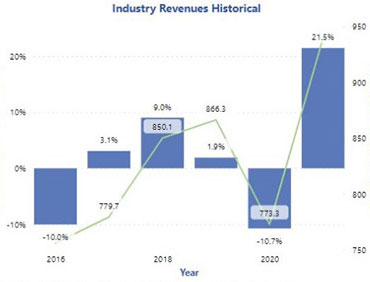

The Simulation Software research delivers current market analysis plus a five-year market and technology forecast. The research is available in multiple editions including worldwide, all regions, and most major countries. The research covers 3D virtual simulation software, digital twins, finite element analysis, multi-functional simulation platforms, electro-magnetics, manufacturing simulation, mechatronics simulation, strategic analysis, market size, industry trends, historical analysis.
ARC Advisory Group research on the Simulation Software global market reveals that this market will be driven by the emergence of comprehensive simulation platforms, the use of the digital twin concept, and the expansion of the 3D virtual simulation software. The overall simulation software market will be driven by the emergence of comprehensive simulation platforms that allow for concurrent product design and validation across the product lifecycle. Additional growth is driven by an increased use of finite element analysis in conjunction with manufacturing adoption spurred on by adoption policies due to the COVID-19 pandemic, the growth and adoption of the digital twin concept, and the growth in Industrial IoT in general. Significant expansion of 3D virtual simulation software across a wide range of applications for science, industry, infrastructure, and consumers allows for the virtual validation of the physical world.
 In addition to providing a five-year market forecast, the simulation software market research provides detailed quantitative current market data and addresses key strategic issues.
In addition to providing a five-year market forecast, the simulation software market research provides detailed quantitative current market data and addresses key strategic issues.
Companies should look to simulation solutions beyond the traditional CAE product design and test areas. Today, pharmaceutical companies are using cutting-edge 3D simulation applications that allow drug developers to simulate compounds at the molecular level. Using these state-of-the-art drug discovery tools, the drug discovery process can be reduced to a matter of months rather than years, and the subsequent costs reduced from millions to hundreds of thousands. Additionally, these same types of simulation tools are being used to research and discover new compounds in material science. This simulation to discover new materials is also being used in conjunction with 3D design simulation for additive manufacturing. Engineers can simulate part designs with fit, form, and function attributes that can only be made through the 3D printing process. New materials can be developed specifically for printed parts. Moreover, the actual 3D printing process can be simulated to validate the manufacturing steps required. Advanced simulation applications are being used today to simulate entire 3D environments for buildings, transportation systems, smart cities, and the alternative energy sources and systems that will power these smart environments. Photometry and point cloud laser tools can be used to capture data used to develop 3D virtual models on a very large scale. This simulation technology will enable engineers, planners, and designers to build the next generation of smart buildings, cities, infrastructure, and transportation.
Today's multi-functional simulation platforms offered by PLM suppliers allow system simulation engineers to virtually assess and optimize the performance of cyber-physical and mechatronic systems. The idea is to provide cyber-physical system (CPS) engineers with the ability to simulate, test, and validate a system's design in a concurrent lifecycle process from early development stages until the final performance validation and controls calibration. Simulation technology has been democratized across engineering disciplines and can be used by many non-SMEs.
This concurrent design/simulate/test/validate process has become an integral part of the model-based design (MBD) approach to system engineering. Aside from encouraging concurrent design, a system engineering approach for mechatronic development often helps reduce complexity, lower component costs, and increase integration efficiency. With an increasing number of products being designed with built-in intelligence, a mechatronic system design drives engineering organizations toward more efficient engineering practices.
This market research may be purchased as a MIRA Service, an Excel Workbook, and/or as a Market Analysis Report (PDF). MIRA Services help unlock the full benefits of ARC’s market intelligence, making the data more actionable for you by adding qualitative context to our market data in an online environment unique to each customer. Regional editions include country and industry market data. Formats available are listed below:
| MIRA Services | MIRA Workbook | Market Analysis PDF | |
|---|---|---|---|
| Annual Subscription | Yes | No | No |
| Worldwide (includes regional data) | Yes | Yes | Yes |
| North America (includes regional data) | Yes | Yes | No |
| Europe, Middle East, Africa (includes regional data) | Yes | Yes | No |
| Asia (includes regional data) | Yes | Yes | No |
| Latin America (includes regional data) | Yes | Yes | No |
Table of contents for this research is shown in the following paragraphs.
The research identifies all relevant suppliers serving this market.
List of countries & currencies included in each region: MIRA-Country
To speak with the author or to purchase the Simulation Software Market Research, please contact us.
Learn more about ARC In-depth Research at Market Analysis
Learn more about ARC Strategic Services at Advisory Services for Industry Leaders

